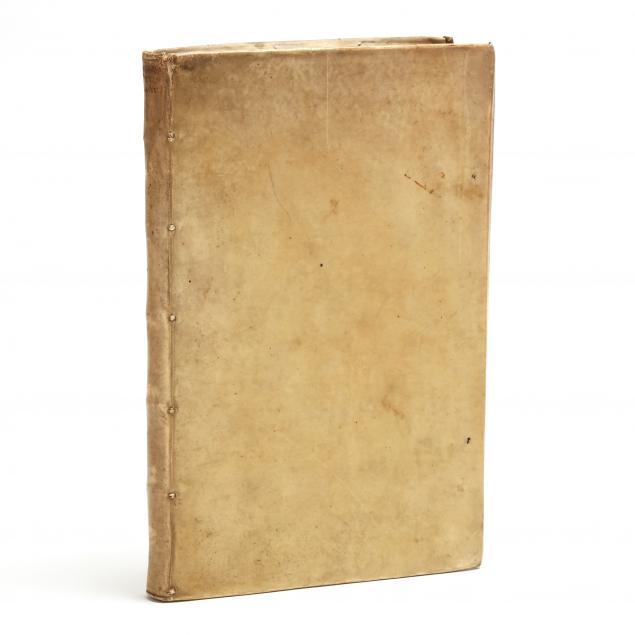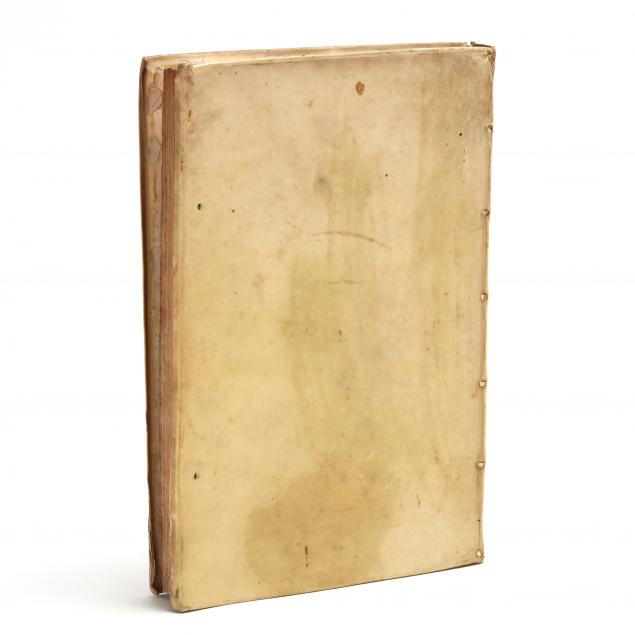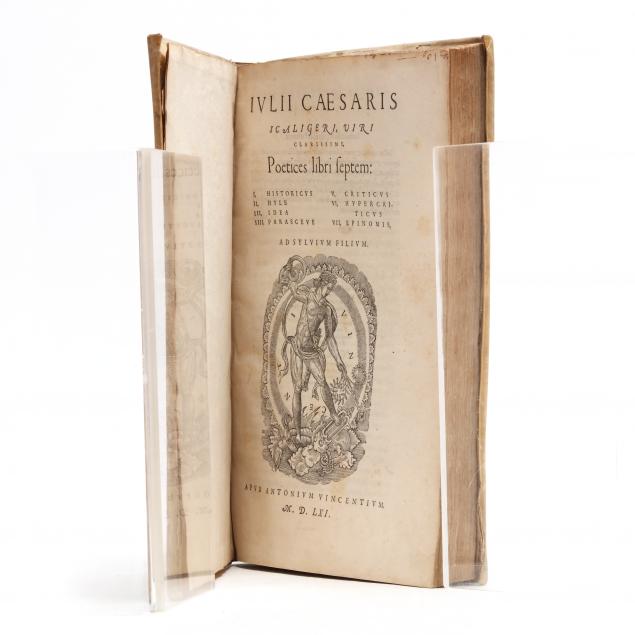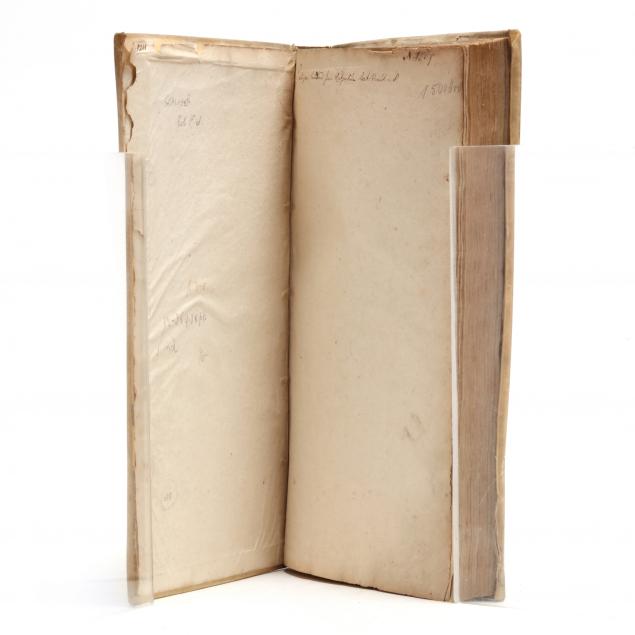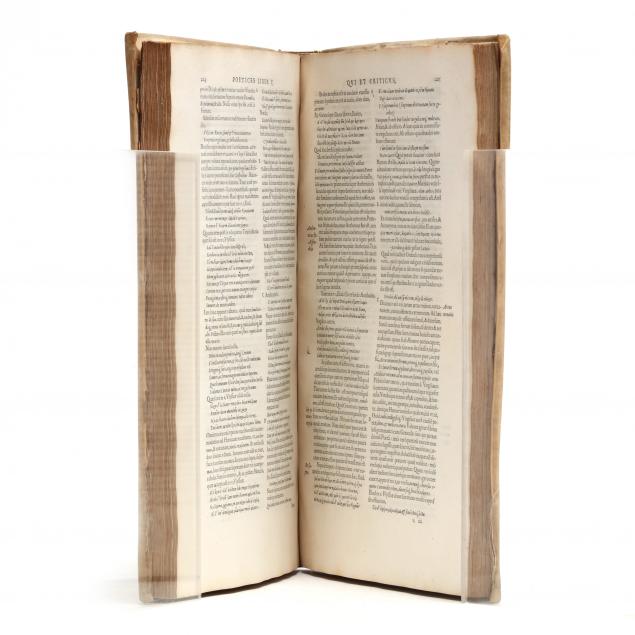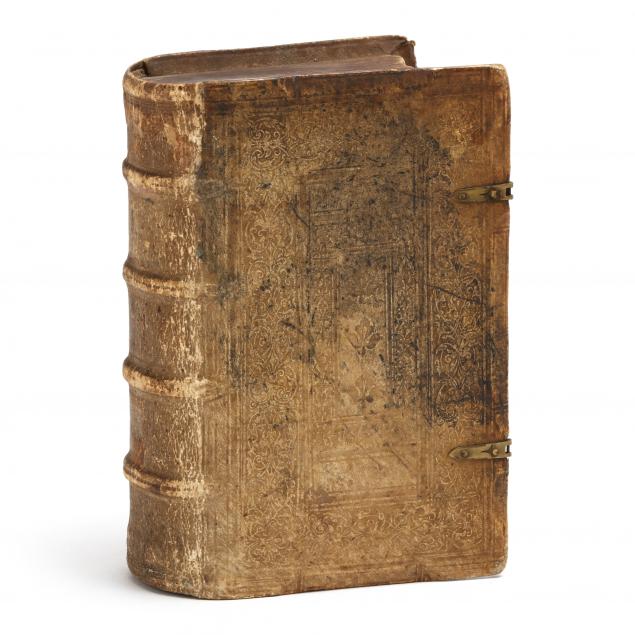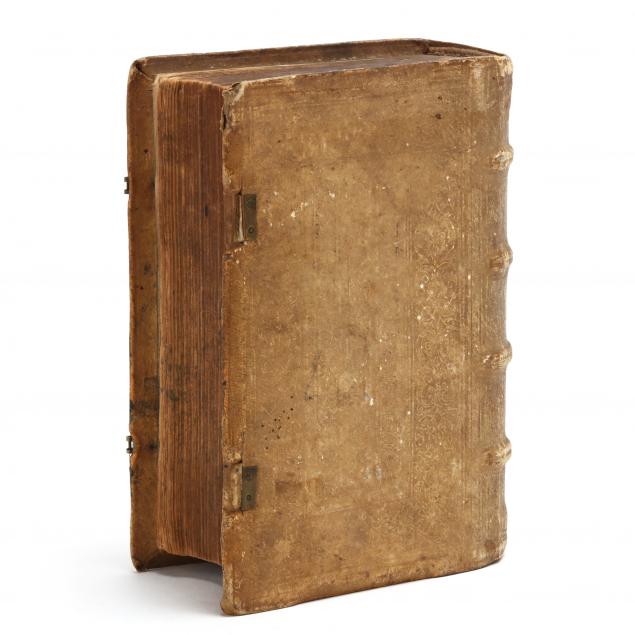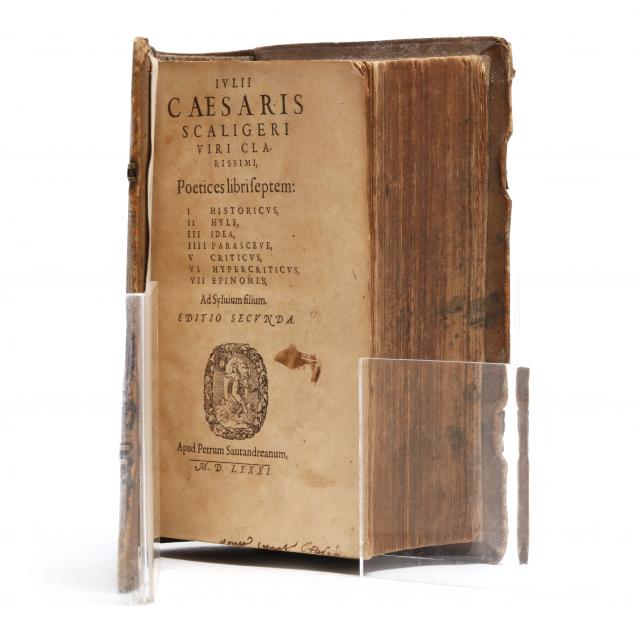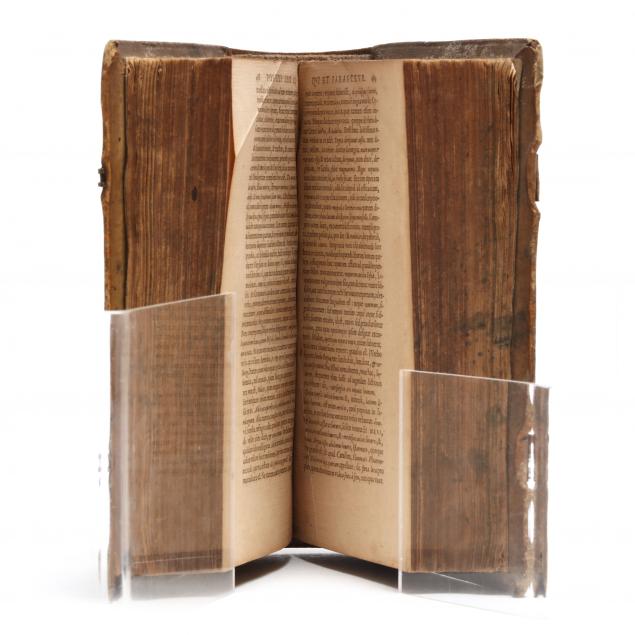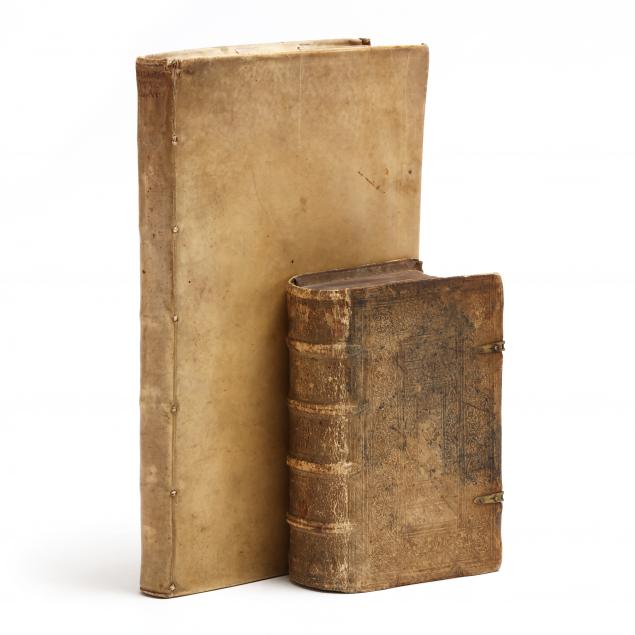
Lot 4022
First and Second Editions of Julius Caesar Scaliger's Treatise on Poetics
Lot Details & Additional Photographs
IULII CAESARIS SCALIGERI VIRI CLARISSIMI, POETICES LIBRI SEPTEM. [Lyon]: Apud Antonium Vincentium, 1561. First edition. Vellum, yapp edges, manuscript on spine. Folio; a4 a4 b-z6 A-L6; [12], 364, [36]pp. Roman type with italics in double-columns; text in Latin with Greek. With woodcut device on title page, woodcut initials and head-pieces, printed marginalia, and index. Adams S595. (Vellum with typical mild discoloration, one small wormhole, splitting at head of spine, lacking ties; paste-downs with separation from boards, endpapers with small edge chips and tears, repair to rear endpaper; pages lightly toned with scattered light foxing, (2) leaves with minor loss to margin, occasional manuscript, edge stain, minor wormholes. A very good copy of this first edition.)
IULII CAESARIS SCALIGERI VIRI CLARISSIMI, POETICES LIBRISEPTEM. [Lyons]: Apud Petrum Santandreanum, 1581. Stated second edition. Blind tooled pigskin with raised bands on spine. 8vo; q8 **4 a-z8 A-Z8 2A-2R8 2S4; [24], 945 (i.e.949), [67 index]pp. (several pages mis-numbered). Roman type with italics; text in Latin with Greek. With index, printed marginalia, printer's device on title page, woodcut head-pieces and ornaments. Adams S597. (Boards with discoloration and staining, spine rubbed, lacking clasps; edge stains, pages toned with scattered foxing mostly at edges, underlining and occasional manuscript or ink mark throughout, several leaves with edge wear and chips or small corner loss, index with light damp staining.)
12 1/2 x 8 1/2 in.; 7 3/8 x 5 1/8 in.
From the Collection of Professor Roberto Severino, Washington, D.C.
Julius Caesar Scaliger (Italy, 1484-1558) was a Renaissance physician and literary critic who spent most of his life in France. Poetices libri septem was first published a few years after his death. This treatise on classical poetry was popular, resulting in numerous editions, and it was incredibly influential for more than a century.
